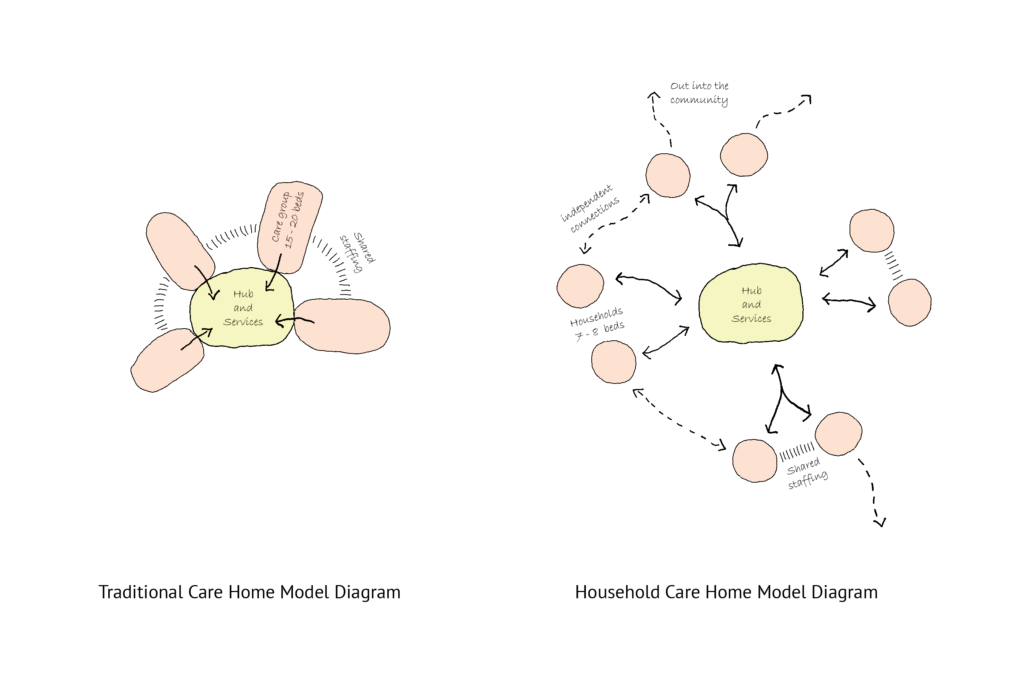Household Care Model
Substituting institutional design for smaller, typically domestic forms can create a more familiar setting which fosters a stronger sense of homeliness and encourages independence. This sense of normality, supported by the functionality of a specialist care home, provides residents with a home which can reduce levels of anxiety, confusion and distress, while providing high levels of support to suit resident’s needs.
The households are linked by a shared hub which provides key facilities not found within the households, creating further opportunity for social interaction and a varied series of experiences during the day.
The hub will typically provide a café, restaurant and shop alongside support services. It will also include facilities which the residents can access and use themselves, such as a resident’s laundrette, rather than relying on the back-of-house facilities usually provided in a standard model of care. The hub acts as a safe ‘high street’ of services.
These day-to-day amenities form an essential part of the residents’ lives providing residents with a wider, richer world within the care environment; creating reasons to go out and interact as active members of a wider society.
Rather than the entire community being helped by general staff, staff are focused on just one or two households. This provides the opportunity for closer and deeper relationships between residents and staff and the staff who know their residents needs more closely and are able to better monitor their wellbeing.
The hub functions to create a microcosm of the real world which the household groups interact with.






